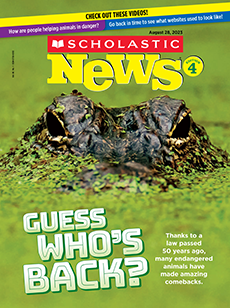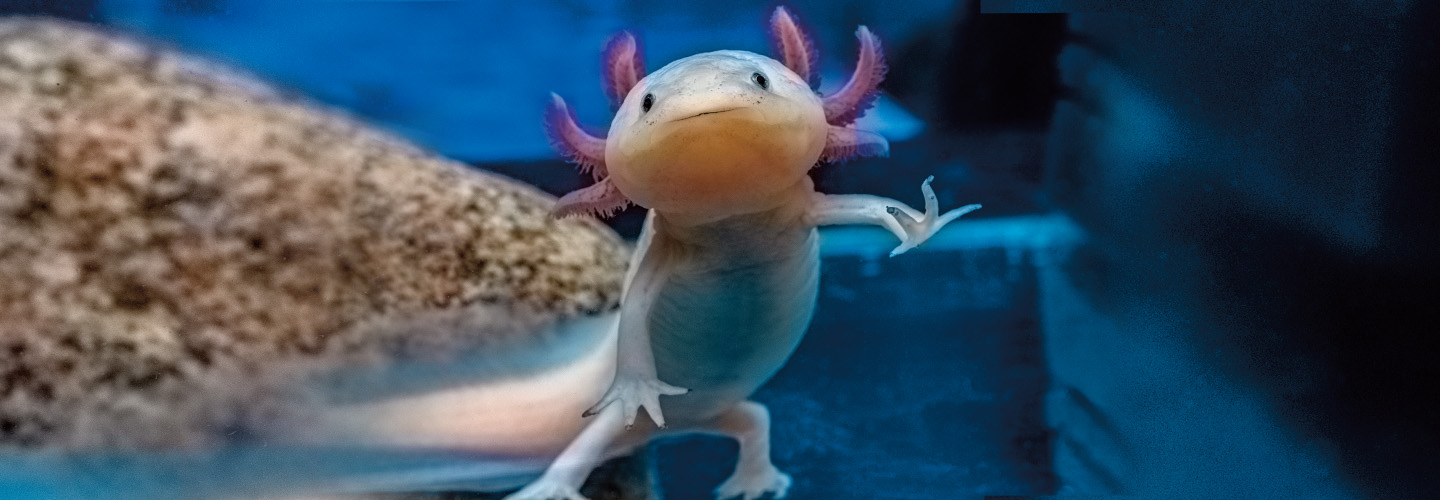You’ve seen them in video games like Minecraft. They’re the stars of countless TikTok videos. In Mexico, their native country, these celebrity salamanders even appear on money. Axolotls (AK-suh-lah-tuhlz) seem to be just about everywhere.
But there is one place where axolotls are hard to find—the wild. Despite their popularity, these amphibians are nearly extinct. Because of habitat loss, pollution, and predators, wild axolotls are now fighting for survival.
Scientists are working to help keep these unique creatures from dying out. And they’re counting on the public to help by adopting axolotls. You can’t bring your new pet home—these adoptions are virtual. But you can help save its life.

